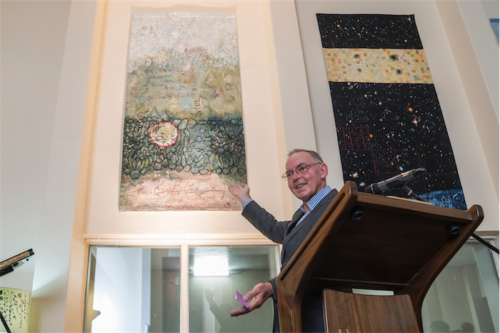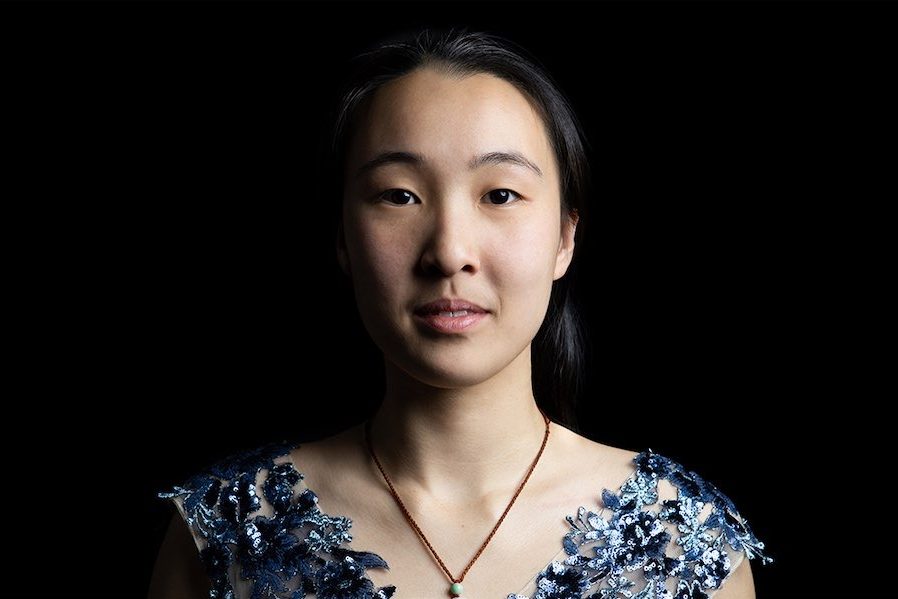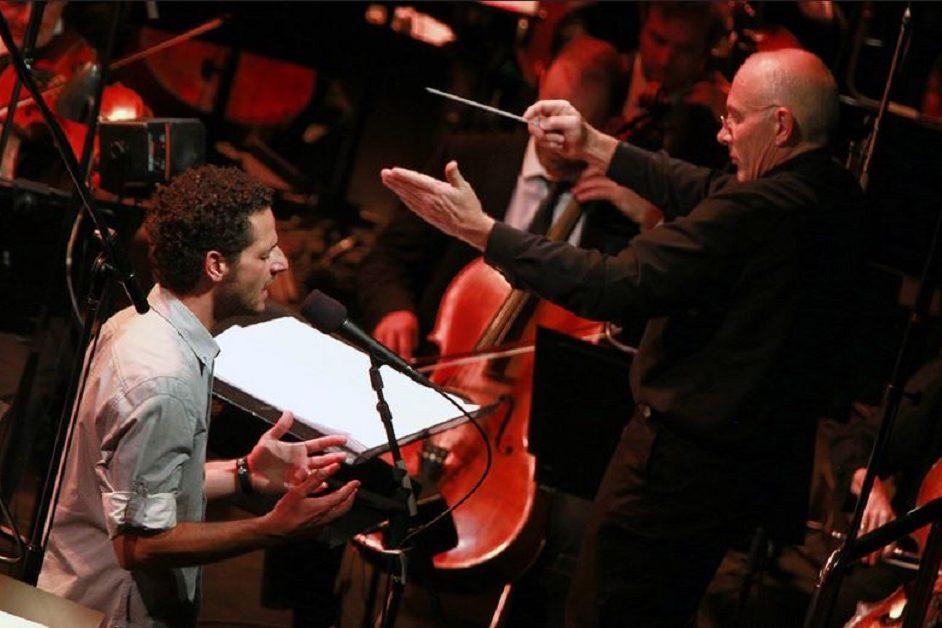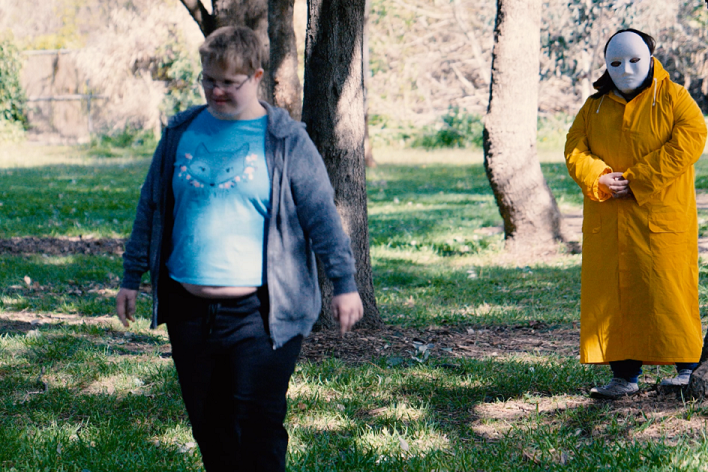
Textile artist Valerie Kirk has woven a suite of striking tapestries to honour the work of our most brilliant scientists. Arts editor HELEN MUSA reports there’s a new one.
“THERE’S a strong parallel between artists and science to transform the unknown into the known,” says textile artist Valerie Kirk as she describes a suite of tapestries she’s woven to honour the work of our most brilliant scientists.
Kirk’s recently-unveiled interpretation of Kyoto Prize awardee Prof Graham Farquhar’s research brings to six the number of such art works now hanging in the hall foyer of University House.
Professor Farquhar who won the 2017 Kyoto Prize in Basic Sciences for his life’s work in plant biophysics and photosynthesis, has joined an illustrious line-up of subjects on the walls.

The series began with a commission by the ANU intended as a gift marking 50 years of University House to produce tapestries linked to Nobel laureates associated with the university – John Eccles, Howard Florey, Peter Doherty and Rolf Zinkernagel.
Kirk, then head of the textiles workshop at the ANU, was the obvious choice for the job.
A fourth tapestry was commissioned from her by the university in 2006 to celebrate the Japan Prize awarded to Prof Frank Fenner, for his work in the eradication of smallpox.
The fifth, for which Kirk was given time through an ACT government $45,000 Creative Fellowship, honoured present-day ANU vice-chancellor Prof Brian Schmidt’s Nobel-winning discovery of the accelerating expansion of the universe.
Farquhar’s achievements are no less dazzling than those of the researchers who went before him. The Kyoto Prize is regarded as the equivalent to a Nobel, and his research on water-efficient crops and the impacts of climate change are crucial and of the moment.
There was more to him than science, as Kirk found. A former ballet dancer, Farquhar had founded the National University Dance Ensemble (now the Canberra Dance Theatre) but it was his work to understand how cells, whole plants and whole forests work, that really captured Kirk’s imagination.

“Graham has been a wonderful person to work with, but the process never became easier, and definitely not quicker, as there was no formula for creating such a tapestry, which had to be matched to the research,” Kirk says.
“It was like launching into the unknown with a blank sheet of paper.”
Eager to know what his research was all about, she asked Farquhar if he could give her any visual stimuli – he wrote an equation on the back of a card and handed it to her.
Her search for visual imagery took her to his laboratory, which was full of nuts, bolts and potted plants, especially eucalypts. That inspired Kirk to make a series of botanical drawings. Then there were the rough equations in his notebooks. She finished some designs in watercolour. The result is discernible in the completed tapestry.
It took four months of full-time weaving, horizontally, but it proved fascinating to see the unknown become a reality. Her hope, she says, is that it will indicate his dedication and the importance of his works in terms of the Kyoto Award.
For his part, describing the tapestry as “a beautiful work of art”, Farquhar noted how amazingly observant Kirk had been as she sought ways of revealing visually his questions to do with the water content of soil.
Brian Schmidt, standing in front of the new tapestry as it was unveiled, says that on hearing of Farquhar’s Kyoto Prize, he had immediately thought: “We have to do a tapestry”. He must have been thinking out loud, because several key ANU professors had brought the project into fruition before he had time to ruminate.
“The artistic and scientific worlds are full of many remarkable people and breakthroughs, but to create an understanding of a big, challenging issue like photosynthesis in tapestry is exceptional,” he says.
The University House tapestries may be viewed in the Great Hall foyer during opening hours.
Who can be trusted?
In a world of spin and confusion, there’s never been a more important time to support independent journalism in Canberra.
If you trust our work online and want to enforce the power of independent voices, I invite you to make a small contribution.
Every dollar of support is invested back into our journalism to help keep citynews.com.au strong and free.
Thank you,
Ian Meikle, editor




Leave a Reply